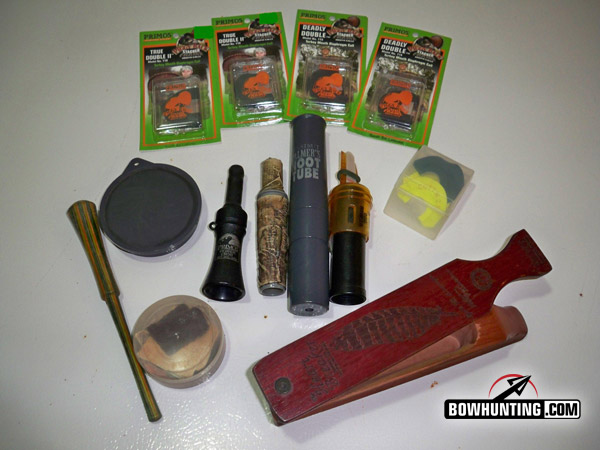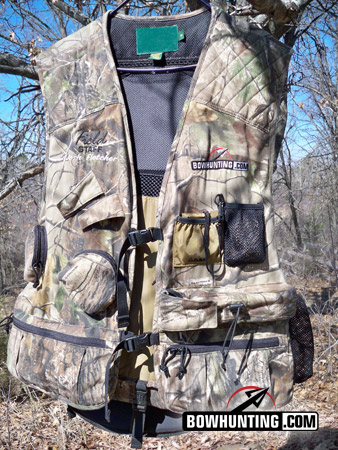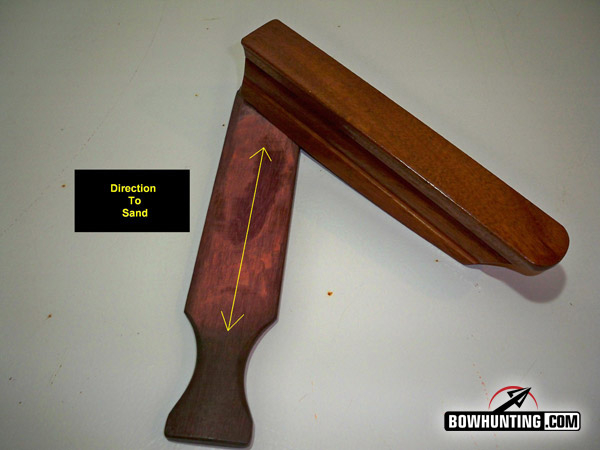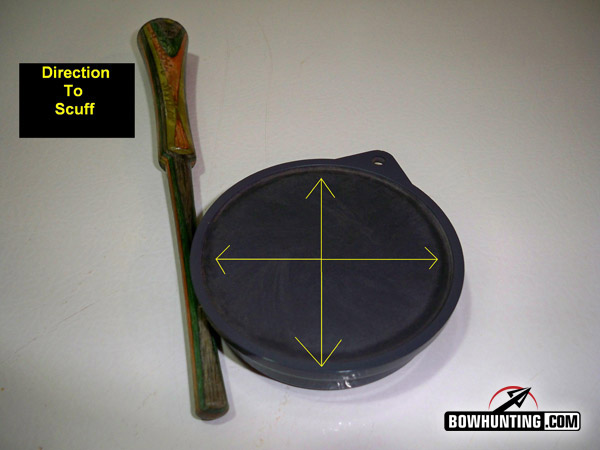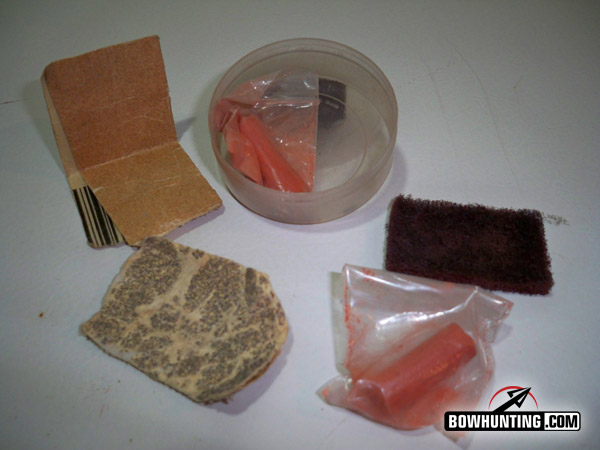LAST UPDATED: May 8th, 2015
As the night’s darkness slowly fades to a dawn of a new day. The whipperwhill sings its last songs before daybreak, and the “who cooks for you, who cooks for you all” call of the barred owl breaks the morning stillness. You sit next to the tree breathing in the cool crisp air. It isn’t long and the morning music of songbirds sing from a near by tree.
All of a sudden, Gobble Gobble! You flinch because the roosting king of spring decided it was time to sing his own song. You tree yelp, and purr to him. Gobble, Gobble, he double gobbles to your calls of whispering sweet innocent nothings.
It isn’t long and you hear the sounds of wings thumping as the big bird pitches down from his roost. Several minutes go by, you ask your self, did he go the other way, and is he coming, what is taking him so long.
Out of the corner of your facemask you catch movement followed up by crunching of leaves and the sound of pfffft-druuummmm, pfffffft-druuuummmm, just then and that movement turns into a tail fan, he’s coming. Your heart begins pounding so hard you can feel it thumping in your ears. Your breaths become faster. With every step he makes the harder you shake, you grab your bow and come to full draw, the first thought that crosses your mind is, “yes, he didn’t spot me!” you take a deep breath, pick a spot, and release… Thwaaakk!
Your arrow drives home and the king of spring is down. As you walk up to this beautiful bird you take a deep breath and admire this truly beautiful bird. This is the dream most spring addicts dream of every year as spring turkey hunting approaches. It’s late February and there is several inches of snow on the ground here in Wisconsin, but that still doesn’t stop me, and thousands of other turkey addicts from dreaming of spring. Turkey hunting preparation takes place long before opening day. Call it a cure for cabin fever if you will, but now is the time to shake the dust off the camo, get that bow out of the case, and start practicing your calling.
The first item that I get the dust off of and get ready for spring is my turkey vest. This is one item that should not be over looked and is very important to a seasoned turkey hunter. I’ve used just about every vest out there and some are average, some are good, and some are great. But threw the years I’ve learned that there are standards that you will need to look for in a good all around vest.
First I prefer a full-shouldered vest over one that has straps that go over your shoulders to bear the weight. By having full-shouldered vest, it distributes the weight more even and helps to prevent digging into the top of your shoulders. If you decided to go with a vest that uses straps, make sure that it has a chest strap. This is a strap that buckles across your chest to prevent the shoulder straps from slipping off your shoulders.
The next thing I look for in a turkey vest is that it must have lots of pockets and organizational slots for easy access to your gear. Companies are getting very good at making turkey vest now that have holders for your pot calls, box calls, diaphragm calls, and every thing in between.
I also want a nice big game bag that is in the back of the vest. Very seldom do I use it to carry a dead bird in. However it’s very handy for carrying decoys, lunch and the niceties such as a roll of toilet paper!
Now that we have a good turkey vest picked out, Ill go over some of the items that I carry in my vest on an average hunt. First and fore most I never go into the turkey woods with out a good pair of optics. You never know when you may need to check out a dark spot up in a distant tree at first light, or see a flock of birds out in a field and need a closer look to see if any have beards.
Also I never step into the spring woods with out a range finder. Next is always a GPS and compass. Majority of the land that I spring turkey hunt on is large tracks of public land. Keeping a bearing on where and how far from the truck you are is very important. The other thing that I use my GPS the most for is marking spots such as turkey strutting zones, dust bowls, sign, and potential roosting trees. Often we walk in the dark to our hunting spots or roost a bird the night before, by using a GPS, allows you to walk right back to that exact locations with out getting lost or bumping birds on your way in.
I always carry my gloves and my facemask in my vest, whether I store them there over the winter or when I’m in the truck heading to the next spot. The reason I do this is that I know I have them with me. I’ve learned the hard way to many times by just putting them in your pant pocket or worse yet, just throwing them in the truck, you will often lose them or forget them when you get out and start hunting again.
I also carry a pair of pruning sheers. I may not use them every time but they are handy when I do need them. There may be a set up that I just want to trim some small branches or brush in my blind. These sheers are a necessity and must have for turkey hunting.
Decoys are another item that I always pack. I may not use them on every set up, or how many I use and ware also depends on the set up and time of year. However I don’t leave home with out at least one decoy in my vest.
Next is a mini head light, I have one that switches to white LED lights to red lights to save my vision in the dark. A headlight is obviously very handy when getting your gear out of your truck before the mornings hunt. I also always keep my headlight in my turkey vest just like my gloves and facemask so I know ware to look when I need it.
I also carry a small pocketknife, you never know when you need to cut a piece of string or more importantly, validate your turkey tag! And on that note I also like to have several zip ties in there as well, often I use them to attach my tag to a bird’s leg, but they come in handy for other things as well.
Last but not least I always carry a set of hunting regulations and toilet paper in a zip lock bag. The toilet paper is crucial when you have your morning “O-Boy!” and the hunting regulations are to read while you’re saying “O-Boy!” As I’ve mentioned earlier these are some of the items that I carry in my vest, not all of them. You will want to tailor what you put in your vest to fit your hunting needs and style.
Next let’s talk about what calls we should pack in to our vest. First to start off with, we will want several different locator calls. The reason we want several is that different birds will respond to different calls. One bird may not gobble to a crow call but he may gobble to an owl hoot. The locator calls that I use the most are the owl call, crow call, palliated woodpecker call, and the coyote howler. I always have these calls packed and ready in my vest. There are others out there that also work well such as a goose call, or a sandhill crane call. They all work well, the main thing is to have several of them so you can mix up your locating calls to what works best for that particular morning.
Now for actual turkey calls, I carry several diaphragm calls, a slate call, and a box call. There our many different turkey calls on the market and I’m not saying that you must carry exactly these, however carry the calls you are comfortable using but make sure you have several calls with you on every hunt. Because just like the locator calls, some birds my just fall in love with your diaphragm yelps, while others will walk the other way. By having a mixed bag of calls, allows you to take that birds temperature (what calls he likes) and mix it up to meet his needs. Also by having several call options you can yelp on a mouth call and cut on a box, to sound like two hens going at each other. I’ve had this work for me many times and it’s a great tactic to get the tom fired up.
You may also want to carry a call that isn’t very popular in the area that you plan on turkey hunting in, such as a wing bone call or a tub call (also called snuff call). The reason being is that if you hunt public land like I do, often these birds have heard every call under the sun from hunters. However by throwing out a different call that isn’t often used in your area may just be what the doctor ordered for a big bird to like what he hears.
I also carry several different strikers for my pot call. You may only have one pot call but by using different types of strikers can make your pot call sound differently. You will also want at least one of your calls to be able to work under poor weather conditions. If you can’t use a mouth call then you may want to carry a box or slate call that is made to work under wet conditions or at the least a bread bag to put your calls into and to keep your calls dry even while you are using them.
The next item that you should pack in your turkey vest is a call conditioning kit. You can buy them or make one your self. I use an old chewing tobacco tin. Inside my tin I have fine grit sand paper, a more coarse grit piece of sand paper. A scuffing pad and some box call chalk. Through out the mornings hunt often I find myself pulling out my conditioner kit and conditioning my calls periodically.
When I pack my turkey vest I make sure to organize my calls and gear to specific pockets and locations with in my vest. I will keep my locator calls in one pocket or area, my strikers in another and so forth. The reason I do this is that when I need a call or an item I don’t have to waist time looking for it. I just reach in and grab what I need. And once I have my vest set up I leave it that way for following years so that my call locations are engrained into my head. It is to a point now that I don’t even have to think about ware a particular item is located.
Now that we have our calls strategically located in our vest let’s talk about getting our calls ready for this spring. Here are the three most common calls used each spring by hunters and how to get your calls working in their prime this spring.
Box Calls
With box calls there are two ways to condition them and get them ready for this spring. The first and my favorite is to sand the lid of the box, yes that’s right I did say sand the lid. The reason I like to sand the lid is that it removes the chalk build up that accumulates on the lid threw the years use of continually chalking the box’s lid.
To do this, flip your box call upside down and expose the underside of the box’s lid. Then with fine grit sand paper and light pressure sand the lid with grain of the wood of the lid. It is very important to sand with the grain and not against the grain. (Grain is the lines in the wood that travel the length of the box call lid) it only takes several passes with the sand paper to remove the chalky build up.
Once you are done sanding the lid do not use your hands to remove any dust that may accumulate. The oil from your hands may affect the friction of the lid. To remove the dust, just merely blow the dust off. Once your box has been sanded it’s ready for use this spring, if you notice threw out the hunting season that your box call needs another conditioning, I usually just chalk the bottom of the lid with box call chalk.
After chalking the box call several times threw out the season I will then re-sand the lid and start over. The number of times needed to condition your box call will depend upon how much you use it threw out the season.
Diaphragm Calls
Diaphragm calls are made up of thin latex reeds, a frame and tape. They are very simple calls that with the slightest cuts and number of reeds can change the sound of call produced. Since they are a simple call they don’t require a lot of work to keep them conditioned. Me personally, I don’t like to reuse diaphragm calls from year to year because your mouth has bacteria, which transfers on to the call. Also they are reasonably cheap to replace.
Next, I hunt all spring and by the end of the season I will have the latex on my favorite diaphragm call stretched out and ready for a new call next year. If you wish to keep your calls fresh I would recommend getting a special mouth call rinse solution. This solution is designed and safe for the use of mouth calls. You just simply rinse the call with this solution and it keeps your call sanitary and leaves your call with a mint flavor.
The solution that I recommend is Diaphresh Rinse. When my diaphragm calls are not in use I store them in my refrigerator. Doing this keeps the latex from drying out and cracking. I also separate the reeds by using flat wooden toothpicks to prevent the reeds from sticking together in storage.
Pot Calls and Strikers
Pot calls are often made from slate, glass, and aluminum however there are other types of surfaces on the market. These are the most common used. With a glass pot call I will first start roughing the surface of the glass with a ruff grit sand paper, once the glass is ruffed to a white color, I will then switch to a finer grit sand paper. With both slate and aluminum surface pot calls I use a piece of scuffing material that can be purchased with a call conditioner kit.
The key to conditioning pot calls is the direction you sand the surface of the call. A common mistake most people do is to sand their calls in a circular motion. Instead sand the surface in a grid pattern. First go up and down on the pot. (North & South) then once you cover the surface by sanding up and down, now sand the surface left and right (East & West) sanding it in a grid pattern. I condition the call until the surface turns a powdery white color.
Do not touch the surface with your hands, another mistake people make is once they get done sanding their pot calls they wipe all the dust off the surface with their hands, which basically reverses all the work you just did. Friction calls need just that, friction. By adding the oil from your skin on the surface of your calls you eliminate or reduce the friction needed for your calls to work properly.
Next don’t forget to condition your strikers. Each time you use your striker it smoothens the tip causing you to lose friction in your calls. Just take your scuffing pad and rub the tip of the striker several times to scuff up the striker.
Ladies and gentlemen, now is the time to get your turkey hunting gear ready for this spring, so when opening day comes your ready to hit the woods running. In this article I covered some of the basics of turkey gear utilized by hunters each spring, I hope I was able to get my fellow bow hunting addicts thinking turkeys and gear this spring. Again spring is a great time of year to be out in the woods and with many products on the market today makes turkey hunting a great sport to go one on one with the king of spring.

